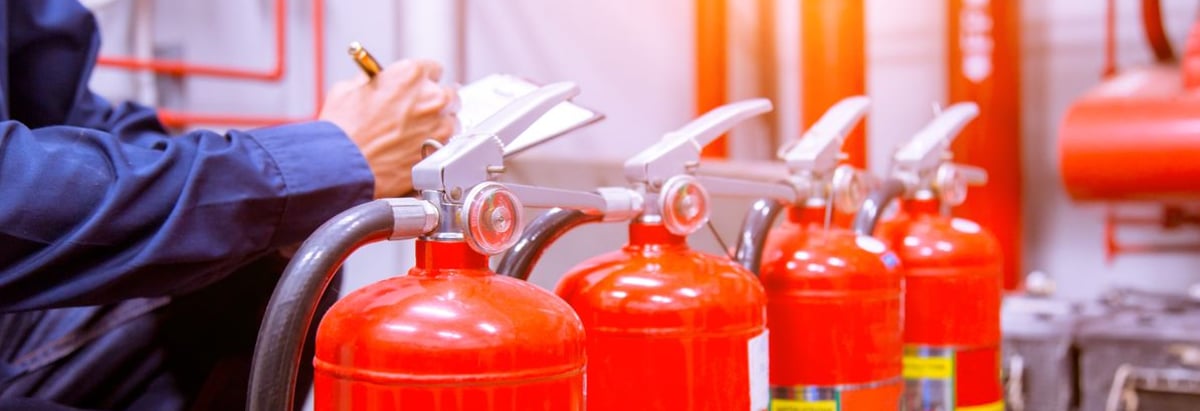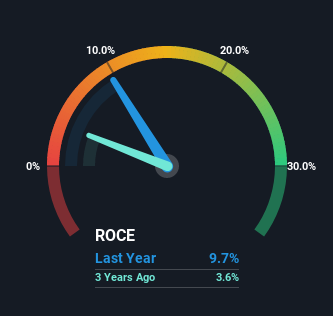- United States
- /
- Chemicals
- /
- NasdaqGS:LIN
The Returns On Capital At Linde (NYSE:LIN) Don't Inspire Confidence

If you're looking for a multi-bagger, there's a few things to keep an eye out for. One common approach is to try and find a company with returns on capital employed (ROCE) that are increasing, in conjunction with a growing amount of capital employed. This shows us that it's a compounding machine, able to continually reinvest its earnings back into the business and generate higher returns. However, after investigating Linde (NYSE:LIN), we don't think it's current trends fit the mold of a multi-bagger.
Understanding Return On Capital Employed (ROCE)
For those who don't know, ROCE is a measure of a company's yearly pre-tax profit (its return), relative to the capital employed in the business. The formula for this calculation on Linde is:
Return on Capital Employed = Earnings Before Interest and Tax (EBIT) ÷ (Total Assets - Current Liabilities)
0.097 = US$6.1b ÷ (US$78b - US$15b) (Based on the trailing twelve months to June 2022).
Therefore, Linde has an ROCE of 9.7%. In absolute terms, that's a low return but it's around the Chemicals industry average of 11%.
View our latest analysis for Linde

Above you can see how the current ROCE for Linde compares to its prior returns on capital, but there's only so much you can tell from the past. If you'd like, you can check out the forecasts from the analysts covering Linde here for free.
What Does the ROCE Trend For Linde Tell Us?
In terms of Linde's historical ROCE movements, the trend isn't fantastic. To be more specific, ROCE has fallen from 14% over the last five years. However, given capital employed and revenue have both increased it appears that the business is currently pursuing growth, at the consequence of short term returns. And if the increased capital generates additional returns, the business, and thus shareholders, will benefit in the long run.
The Bottom Line On Linde's ROCE
Even though returns on capital have fallen in the short term, we find it promising that revenue and capital employed have both increased for Linde. And long term investors must be optimistic going forward because the stock has returned a huge 159% to shareholders in the last five years. So should these growth trends continue, we'd be optimistic on the stock going forward.
Like most companies, Linde does come with some risks, and we've found 1 warning sign that you should be aware of.
For those who like to invest in solid companies, check out this free list of companies with solid balance sheets and high returns on equity.
New: AI Stock Screener & Alerts
Our new AI Stock Screener scans the market every day to uncover opportunities.
• Dividend Powerhouses (3%+ Yield)
• Undervalued Small Caps with Insider Buying
• High growth Tech and AI Companies
Or build your own from over 50 metrics.
Have feedback on this article? Concerned about the content? Get in touch with us directly. Alternatively, email editorial-team (at) simplywallst.com.
This article by Simply Wall St is general in nature. We provide commentary based on historical data and analyst forecasts only using an unbiased methodology and our articles are not intended to be financial advice. It does not constitute a recommendation to buy or sell any stock, and does not take account of your objectives, or your financial situation. We aim to bring you long-term focused analysis driven by fundamental data. Note that our analysis may not factor in the latest price-sensitive company announcements or qualitative material. Simply Wall St has no position in any stocks mentioned.
About NasdaqGS:LIN
Linde
Operates as an industrial gas company in the Americas, Europe, the Middle East, Africa, Asia, and South Pacific.
Proven track record second-rate dividend payer.


